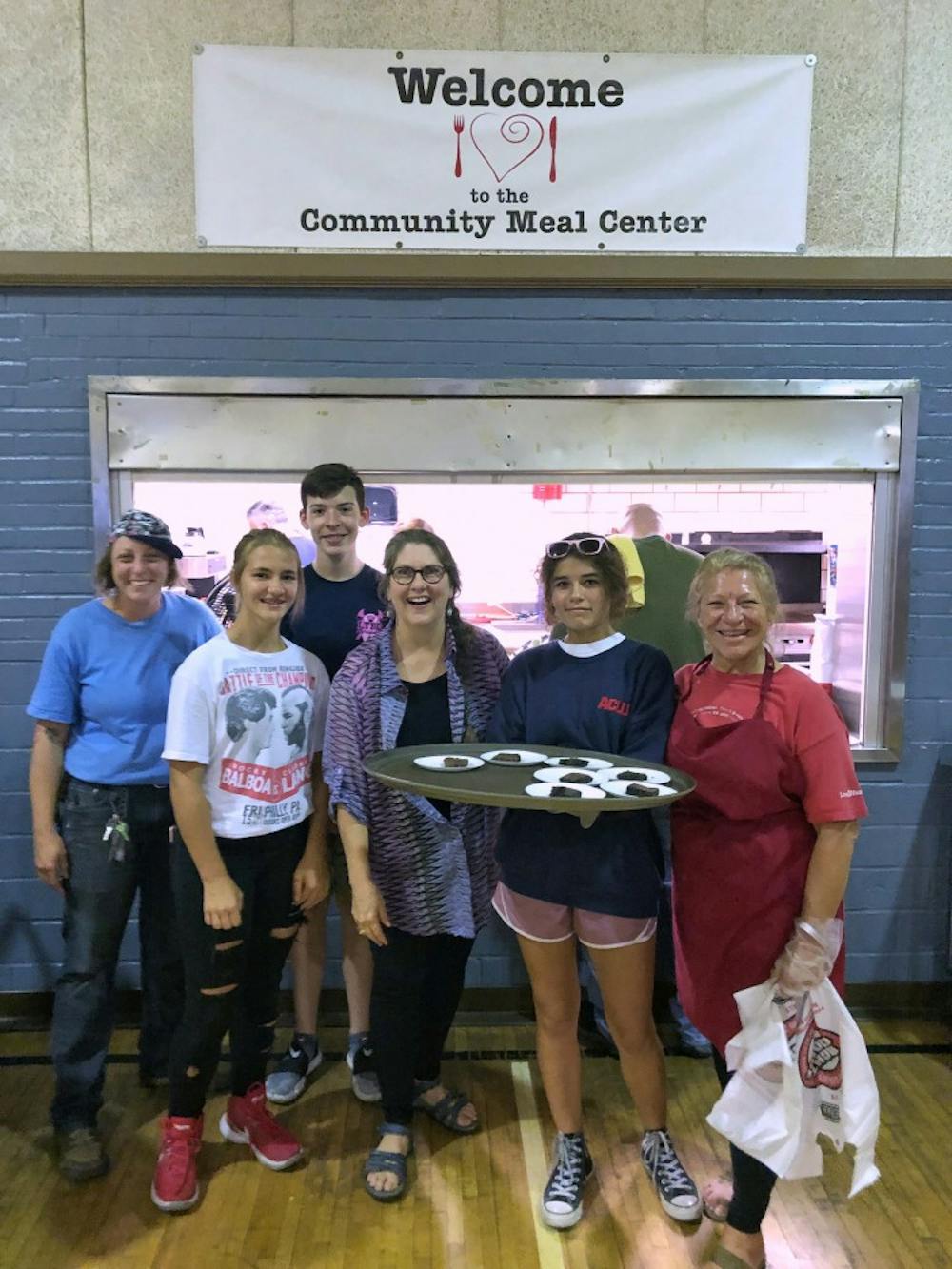As the first month of Ohio’s bow hunting season comes to an end, the Community Meal Center’s pantry fills with hunks of venison, enough to feed several Hamilton families this winter.
Members of the Oxford Deer Management Program kill, or “harvest,” deer to feed those in need and strengthen the environment, said member Jeremy Ritzier.
Oxford’s Deer Management Program was started in 2009 by David Treleaven, Oxford’s Environmental Specialist, after Miami University’s Institute for the Environment and Sustainability (IES) conducted a white-tailed deer population assessment in 2007.
The project concluded that Oxford’s deer population density was about three times larger than desired deer populations, according to an article in the Ohio Journal of Science.
The goal of the Oxford Deer Management Program is to prevent the spread of disease among deer, limit the number of deer-vehicle accidents, reduce damage to vegetation and the local environment and feed those in need.
Butler County has a two deer tag limit, which regulates that bow hunters can only harvest up to two deer in Butler County per hunting season.

Members of Oxford’s Deer Management Program are required to donate the first deer they kill to the Community Meal Center (CMC), a non-profit organization that offers free meals at 5 p.m every Friday at Zion Lutheran Church in Hamilton, Ohio.
Over a ten-year period, the program has harvested 109 deer, prevented 6,141 deer from being born, and has donated 2,742 pounds of venison to those struggling to find a meal.
Lauren Marsh founded the CMC in 2001 and has been working with hunters and accepting venison donations since 2005.
“Here at the Community Meal Center, we all bring our own gifts, and if people like to hunt, and that’s how they like to contribute, then we honor everybody’s gift,” Marsh said.
Marsh and her volunteer staff pick up the donated venison from H&M Processing, a butcher shop in Okeana, Ohio, in one or two pound “chubs” and use it to make sloppy joes and casseroles.
Enjoy what you're reading?
Signup for our newsletter
“I didn’t know it was deer until I was told,” said Margaret Moore, a guest at the CMC. “It’s delicious. It’s just like hamburger.”
Marsh also said she supports hunting as a means to control the deer population because she’s been in eight deer-vehicle accidents.
When Ritzier hunts in Riley and Brown County, Ohio, he notices a huge difference in the deer population than when he hunts in Oxford, and he said Oxford’s deer population is out of control.
Three years ago, Ritzier said he was hunting in Oxford and saw a young deer with a clothesline wrapped around its antlers and body.
“You need to take that deer out because it’s suffering,” Ritzier said.
Ritzier donates both deer he harvests to the CMC and makes an effort to pick up trash when he’s out hunting.
David Gorchov, a professor of biology at Miami, partially blames deer overpopulation for the depletion of Ohio’s native shrubs, tree seedlings and wildflowers.
“Most tree seedlings and native shrubs are highly preferred by deer, and unless deer are excluded, we have almost none left in the natural areas,” Gorchov said.
Thomas Crist, the chair of Miami’s biology department and Natural Areas Committee, had two graduate students, Michelle Barrett and Thomas Peterson, conduct deer density studies in Miami’s natural areas in 2013 and 2017.
Both studies found similar deer population densities consistent with seasonal deer migration patterns and concluded that nearby deer populations are negatively impacting the ecosystem and are most likely overpopulated.
“If you look at other forests in the region where there have been greater hunting pressures, and you look at the understory plant communities in some of the forest there, you’ll see that they have a more diverse plant community then what you would see in [Miami’s] natural areas,” Crist said.
In addition to reducing biodiversity, Crist says reducing the number of deer will minimize the risk of people getting injured by deer.
“Periodically, there have been encounters between deer and people in the natural areas and in Oxford neighborhoods,” Crist said. “There was an incident [in Nov. 2005] when a deer broke through a window in Upham Hall and went into a room there and caused a lot of damage and a lot of stress.”
Regardless of what’s being served at the CMC, Lauren Marsh said she makes an effort to sit and eat with her guests to help reduce socio-economic boundaries.
“Our mission [at the CMC] is to have a safe and dignified haven where a hot meal can be shared,” Marsh said.




